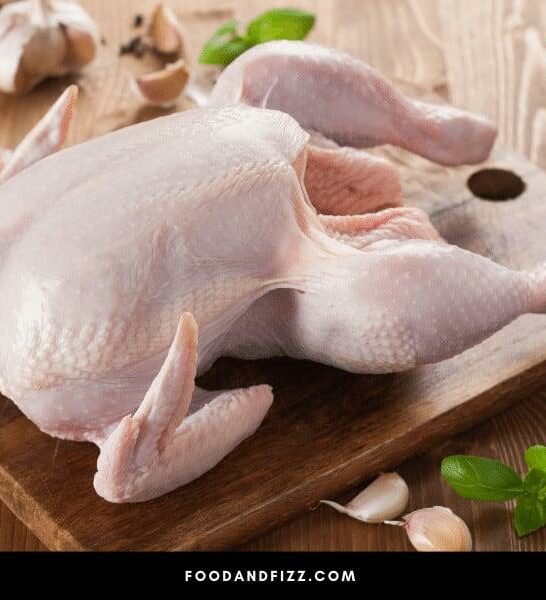What does a chicken vein look like? Chicken veins are a discoloration of the chicken joints and are reddish, pinkish, or dark purplish in appearance. Besides the joints, it’s also possible to find chicken veins on thighs, breasts, legs, and wings.
While not all chickens will have these chicken veins, it’s important to note that higher health risks are involved for those with them.
However, I don’t have to throw away the chicken since there are solutions to the chicken veins problems without risking my life. One way to deal with the chicken veins risk is to ensure thorough cooking.
What Does a Chicken Vein Look Like?
Chicken veins are traceable in live chickens as some reddish or pinkish veins near the skin. They can be seen when the feathers are removed or pushed apart. However, when slaughtered, chicken veins may as well carry a reddish, pinkish, dark purplish, or whitish color. The appearance of all these colors results from blood stains that remained after the slaughter. Further, after cooking, the color of the veins turns black.
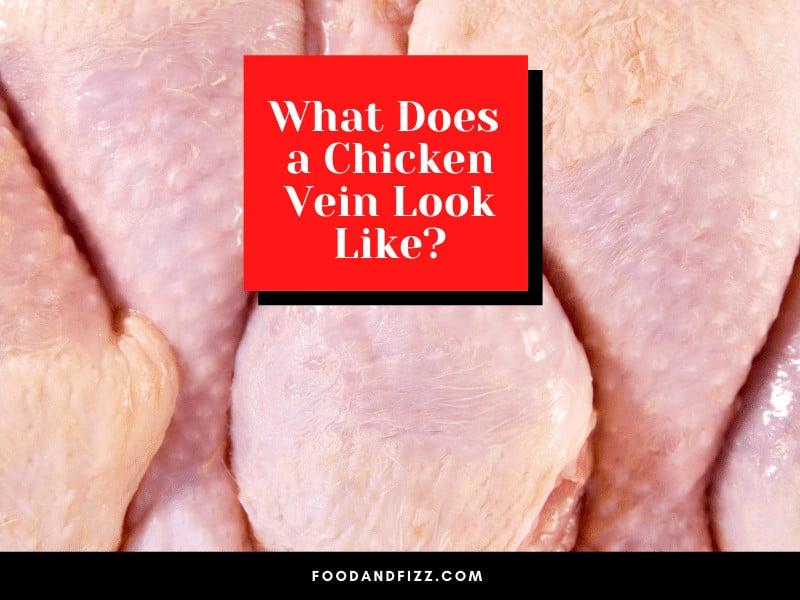
Ways to Notice Chicken Veins
I have always paid attention when preparing a chicken for a meal. That’s because, despite its deliciousness, chicken meat can have health risks if not adequately checked and cooked. One such risk results from chicken veins. These stained blood veins can easily be traced if one pays close attention!
So, here are simple ways through which I can notice the veins.
1. Skin check
This doesn’t require the chicken to be slaughtered. All I do is separate the feathers or pluck out some feathers and look at the skin. It’s possible to see the veins in red at this point.
If the chicken is already slaughtered, I consider this one of the best vein tracing techniques.
Doing so requires examining certain body parts where the chicken veins are always visible. First, I always begin by checking under the wings and on the legs.
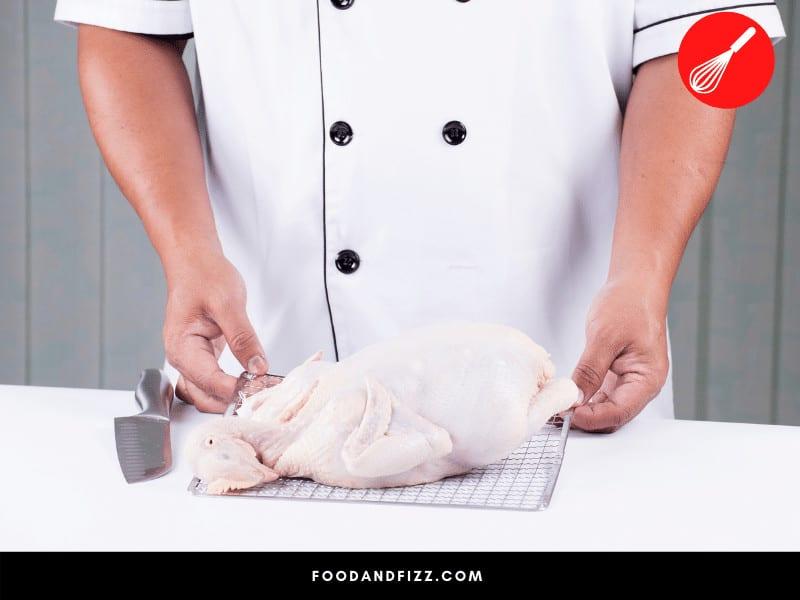
2. Internal checks
It’s easy to see a pinkish or reddish coloration in these areas. Other common areas to consider include the chicken breast, the backbone viewed from the inside, and the joints. The most likely coloration will be reddish or dark purplish colors in all these areas.
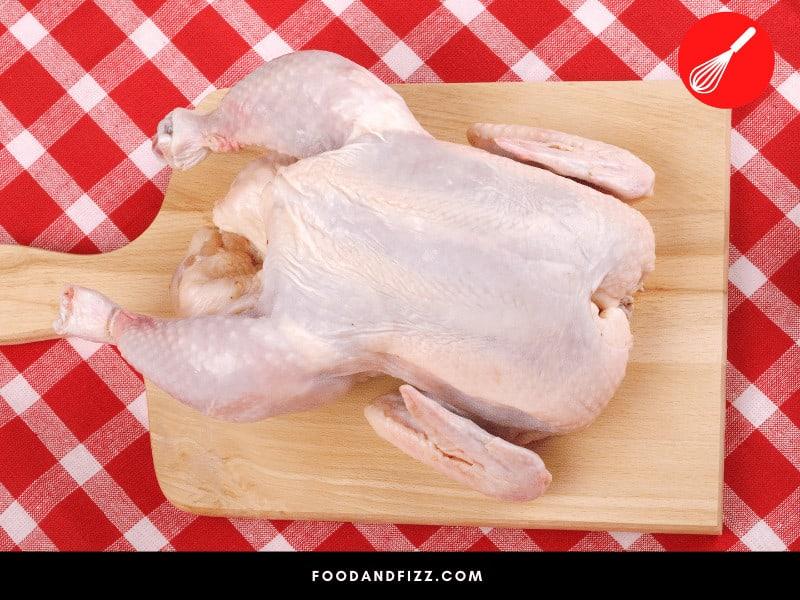
3. Cooked chicken
Sometimes it’s not always the case that I will recognize the veins in an uncooked chicken. I notice some of these veins after I have already cooked it. However, this is not as hard as you might think. It’s easy! All I do is check for black spots, especially on what would appear like a thread. If they are present, I found the chicken veins in my chicken delicacy.
Why I Dislike Chicken Veins
I dislike chicken veins for several reasons. While some reasons are familiar to everyone, others are personal. However, you probably would hate them for the same reasons that I do.
1. Health risks
Chicken veins, especially when colored means they contain clotted blood inside. Like any other animal blood, it carries pathogens that could pose serious health problems, especially if not well-cooked. This is why I wouldn’t say I like the veins and would remove them in any instance where possible.
2. They aren’t appetizing.
I find chicken veins gross, whether in a cooked or raw chicken. As such, it always causes me to dislike the meat. Chicken delicacies should have a nice flavor, look, and taste. Unfortunately, the look on those reddish, black, or purplish spots isn’t tasty at all.
How to Get Rid of Chicken Veins and Their Risks
While there are considerable risks in consuming chicken veins, I wouldn’t advise anyone to throw away the meat. There are always several measures I take to ensure the risk is evaded. The techniques aren’t complex, and anyone can apply them. Some of the best methods I have had to use to avoid the risks include;
1. Thorough cooking
Chicken veins contain blood, which is a potential risk to one’s health. As such, dealing with the possibility of contracting an infection would require thorough cooking of the chicken meat. Avoid eating any meat that shows signs of redness or blood, which means it’s not cooked correctly.
2. Thorough washing
Another way I have dealt with the chicken veins, or at least their risks, is by doing a thorough cleaning. I mostly use water from running taps while thoroughly scrubbing the meat.
The goal is to ensure the removal of all the bloodstains present in the veins. That guarantees some safety when consuming chicken meat, especially one with too many veins.
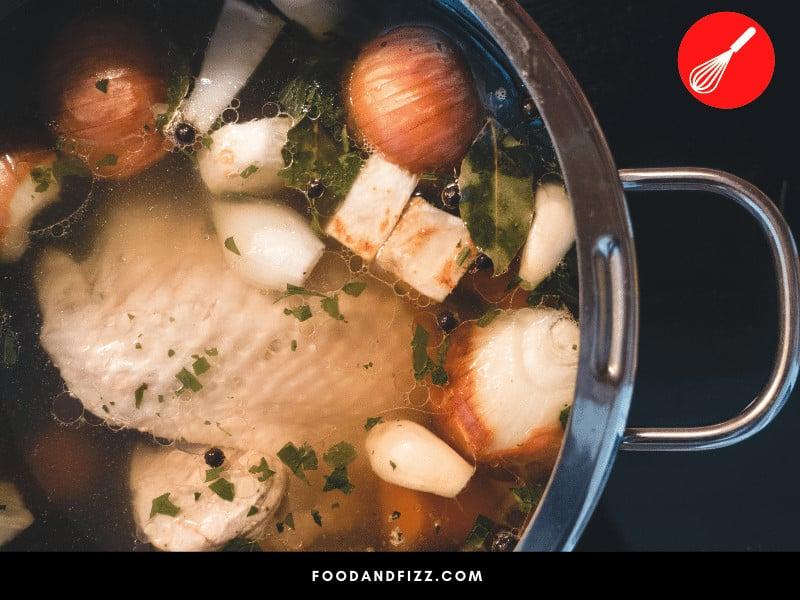
3. Remove the veins
There are probably many ways to eliminate the veins from chicken meat. However, I have two that are my most preferable. They are easy, fast, and work exceptionally well. One, there is plucking the veins out of the meat. That is possible using a fork.
Begin by holding the tendon or a vein on one of the teeth of the fork and slowly turn it around to pull the vein out. Moving too fast could break the vein while still inside the meat.
Second, I decided to cut them out. While the approach works, it’s a little messy, so I rarely use it. The easiest places to apply the two techniques are the thighs and the breasts. However, using a fork is preferable for the under the wings, the back, and the joints.
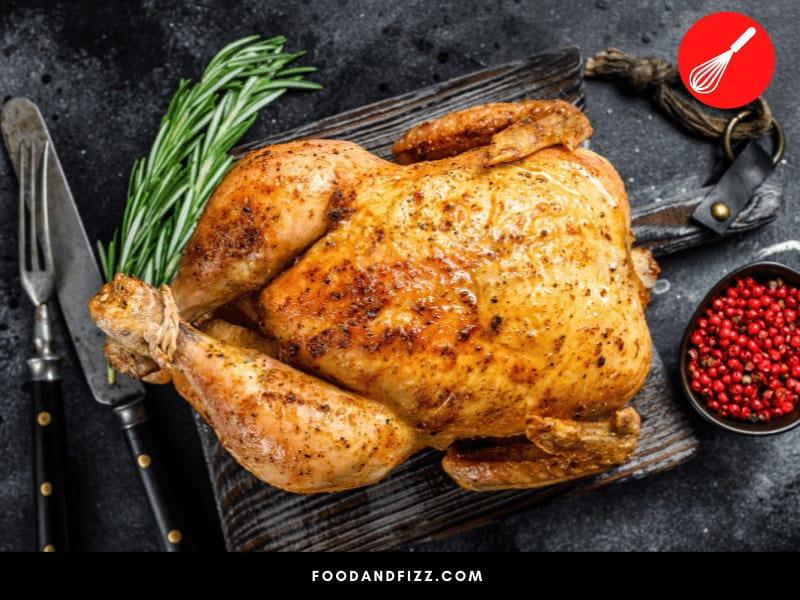
Frequently Asked Questions on What Does A Chicken Vein Look Like?
Can chicken veins be traced after cooking the meat?
Yes, it’s easy to notice them if you’re keen. They always appear as small tubes containing solidified black content, which is cooked blood.
Can I get sick by consuming chicken veins?
Not unless they are adequately cooked. Undercooked chicken veins mean they have raw blood, which could be contaminated and may pose health risks.
Can I remove the tendons or chicken veins?
Yes, it’s possible to remove them. That can be done by either cutting them out of the meat or plucking them from it.

